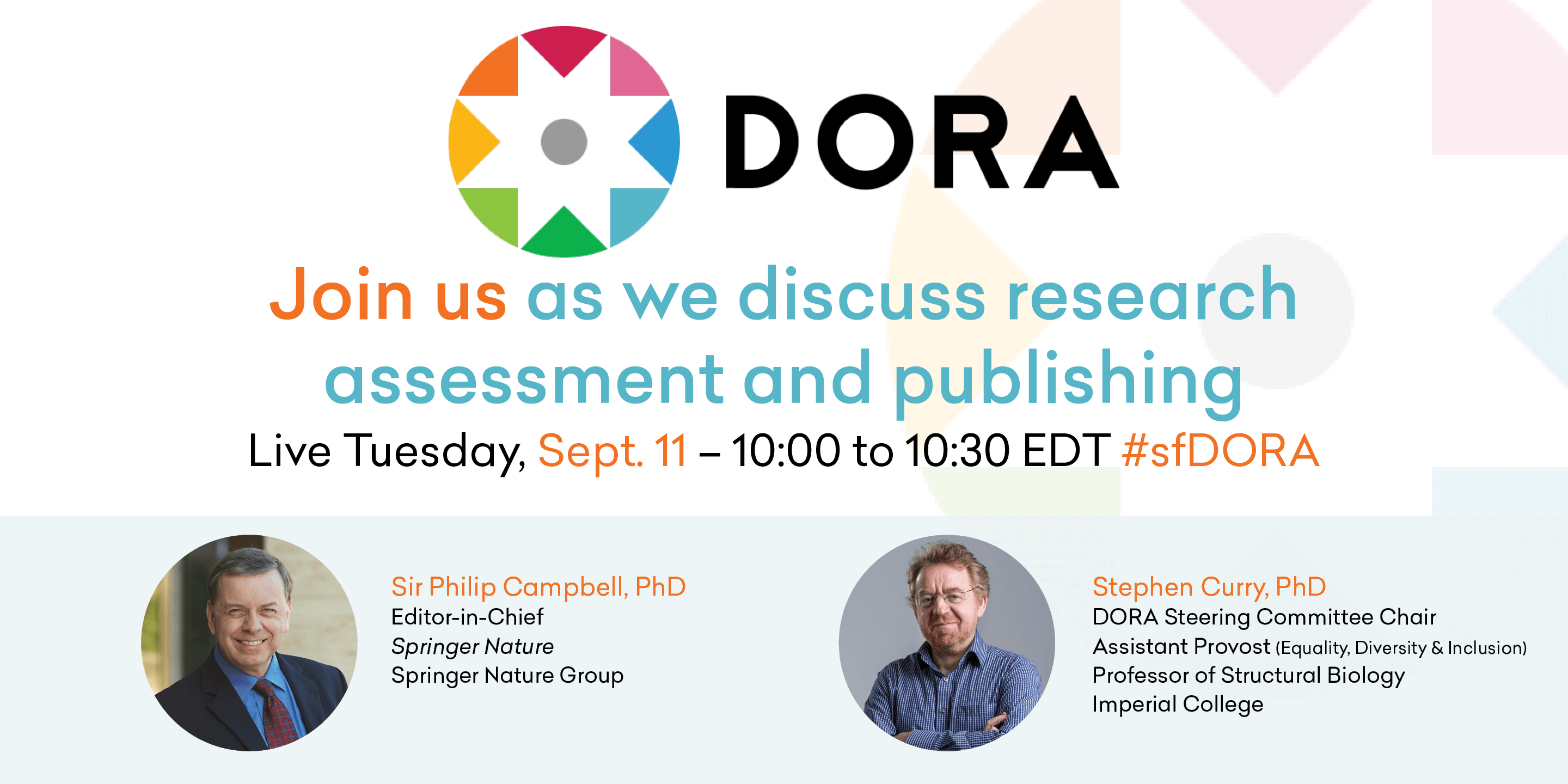
Research articles are one of the main outputs of scholarly research and factor heavily in hiring, promotion, and funding decisions in academia. On September 11, the chair of the DORA steering committee, Prof. Stephen Curry, interviewed the Editor-in-Chief of Springer Nature, Sir Phillip Campbell, about the role of publishers in research assessment.
Before moving to his current role at Springer Nature, Campbell spent 23 years as the Editor-in-Chief of the influential journal Nature, which publishes around 800 research papers each year. He has been thinking about the effects of journal-based metrics for more than a decade. In 2008, he wrote an article, “Escape from the Impact Factor,” which outlined his concern for the growing dependency on the use of journal brands to judge the merit of scholarly contributions. Since that time, there has been a sustained increase in concerns about lab conditions, the way that labs are managed, the pressures researchers face, and how people are assessed.
Campbell agrees that Nature has a responsibility to raise awareness about the issues associated with the misuse of journal-based metrics. He noted that some of the most highly cited and important papers were not published by Nature or its competitors. He says, “It is too simple to rely on citations for the judgment of individuals. You need to look at the papers. You need to look at the work.”
Looking at the work, however, takes time. Like others, Campbell recommends applications include a short narrative piece that provides context and describes research outputs with relevant citations incorporated into the statement.
“It is too simple to rely on citations for the judgment of individuals. You need to look at the papers. You need to look at the work.” – Sir Philip Campbell, Editor-in-Chief of Springer Nature
Escaping the dependency on journal impact factors is a monumental challenge, especially for researchers, who see it as necessary for career advancement. Campbell has heard researchers share stories about how difficult it is to build careers without using journal-based metrics to get ahead. “I have no confidence that the older generation will solve the problem.” But he is hopeful early-career researchers will be the driving force for change in the scholarly community.
Researchers are not the only group that can help change the system. Academic institutions and funding agencies have the potential to drive change from the top down by updating their policies describing how the scholarly outputs of research are assessed by reviewers. Campbell notes that the NIH Biosketch, which asks authors to provide a personal statement and a statement describing their contributions to science, is one attempt that has inspired other funders to focus more on research contributions.
Change needs to happen locally and globally. Researchers are mobile, often moving around to different universities as they climb up the academic ladder. Even if one university implements new policies, early-career researchers who are unsure of where they will be employed in the future will default to the standards set by the majority of institutions.
This was the third interview in our series on research assessment. Other interviews include:
Research assessment and hiring junior faculty–Dr. Sandra Schmid, Cecil H. Green Distinguished Professor in Cellular and Molecular Biology and Chair of the Cell Biology Department at UT Southwestern Medical Center
Research assessment and funding decisions in the life sciences–Dr. Shahid Jameel, CEO of the Wellcome Trust/DBT India Alliance
